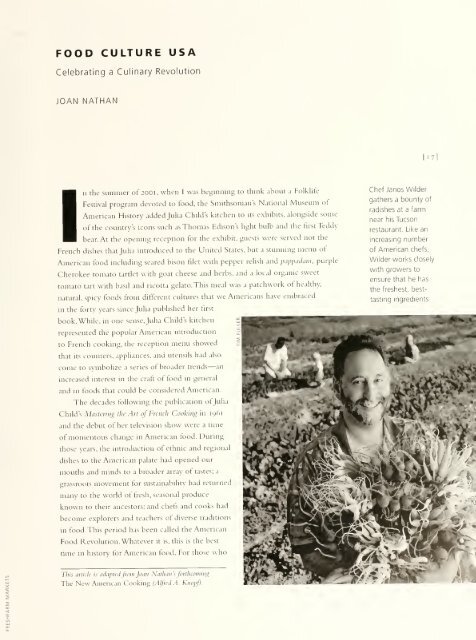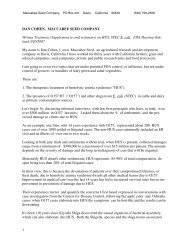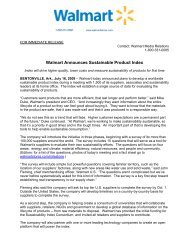Smithsonian - Perishable Pundit
Smithsonian - Perishable Pundit
Smithsonian - Perishable Pundit
You also want an ePaper? Increase the reach of your titles
YUMPU automatically turns print PDFs into web optimized ePapers that Google loves.
FOOD CULTURE USACelebrating aCulinary RevolutionJOAN NATHAN[17]Inthe summer of 2001, when I was beginning to think about a FolklifeFestival program devoted to food, the <strong>Smithsonian</strong>'s National Museum oíAmerican History added Julia Child's kitchen to its exhibits, alongside someof the country's icons such as Thomas Edison's light bulb and the first Teddybear. At the opening reception for the exhibit, guests were served not theFrench dishes that Julia introduced to the United States, but a stunning menu ofAmerican food including seared bison filet with pepper relish and pappadam, purpleCherokee tomato tartlet with goat cheese and herbs, and a local organic sweettomato tart with basil and ncotta gelato.This meal was a patchwork of healthy,natural, spicy foods from different cultures that we Americans have embracedin the forty years since Julia published her firstbook. While, in one sense, Julia Child's kitchenrepresented the popular American introductionto French cooking, the reception menu showedthat its counters, appliances, and utensils had alsocome to symbolize a series of broader trends—anincreased interest in the craft of food in generaland in foods that could be considered American.The decades following the publication ot JuliaChild's Mastering the Art of French Cooking in 1961and the debut of her television show were a timeof momentous change in American tood. Duringthose years, the introduction of ethnic and regionaldishes to the American palate had opened ourChef Janos Wildergathers a bounty ofradishes at a farmnear his Tucsonrestaurant. Like anincreasing numberof American chefs,Wilder works closelywith growers toensure that he hasthe freshest, besttastingingredients.mouths and minds to a broader array ot tastes; agrassroots movement for sustainability had returnedmany to the world of fresh, seasonal produceknown to their ancestors; and chefs and cooks hadbecome explorers and teachers of diverse traditionsin food. This period has been called the AmericanFood Revolution. Whatever it is, this is the besttime in history for American food. For those whoThis article is adapted fromJoan Nathan'sforthcomingThe New American Cooking (Alfred A. Knopf).








